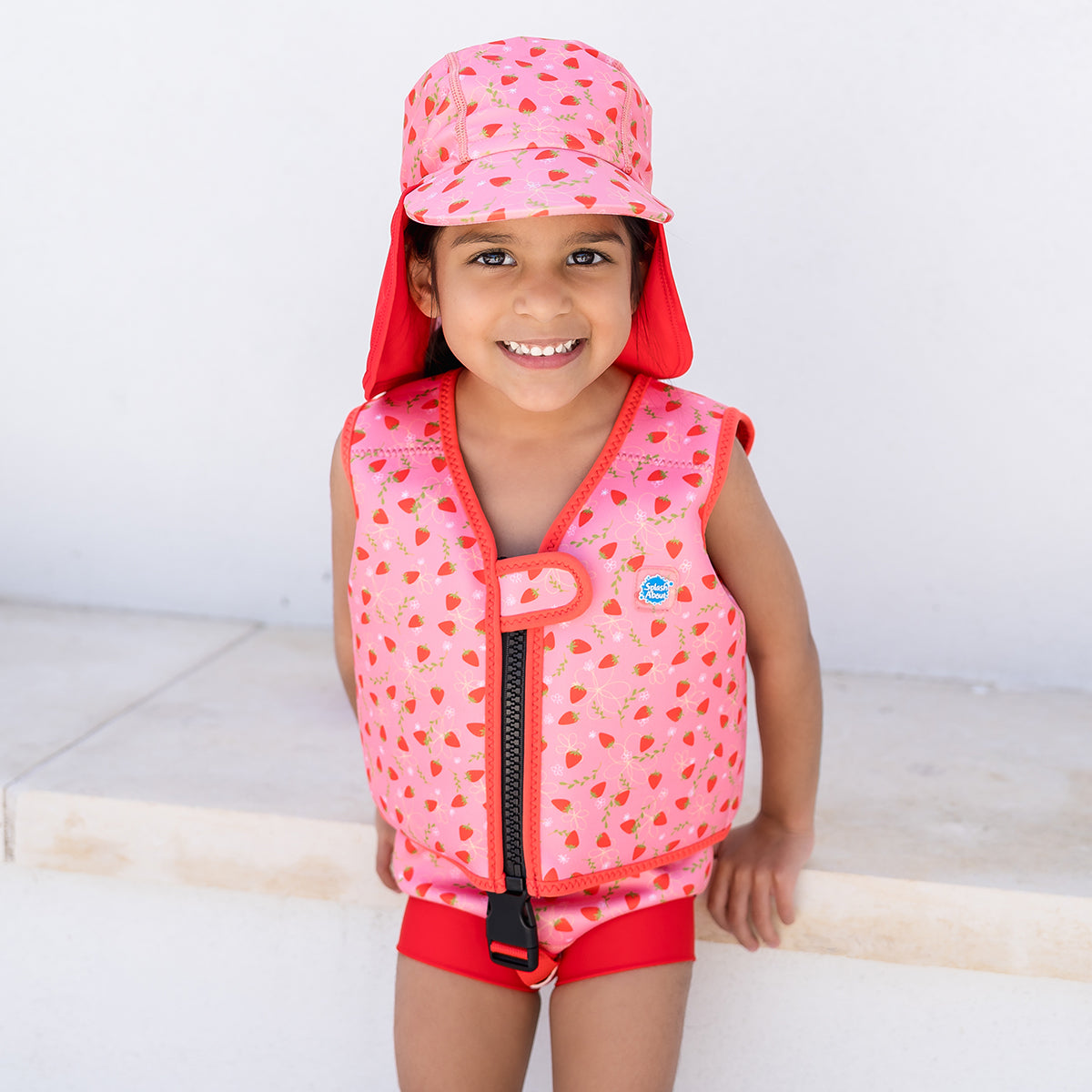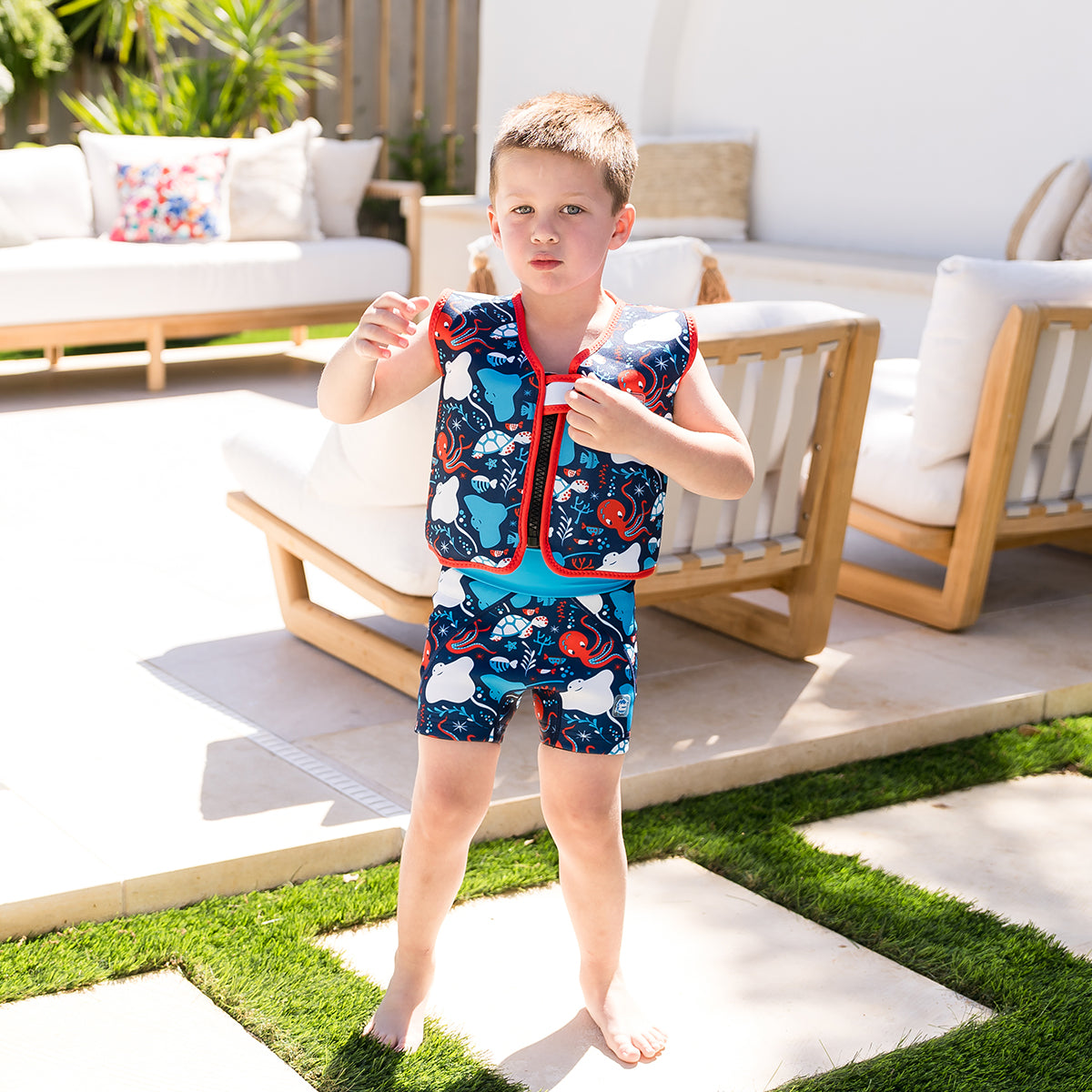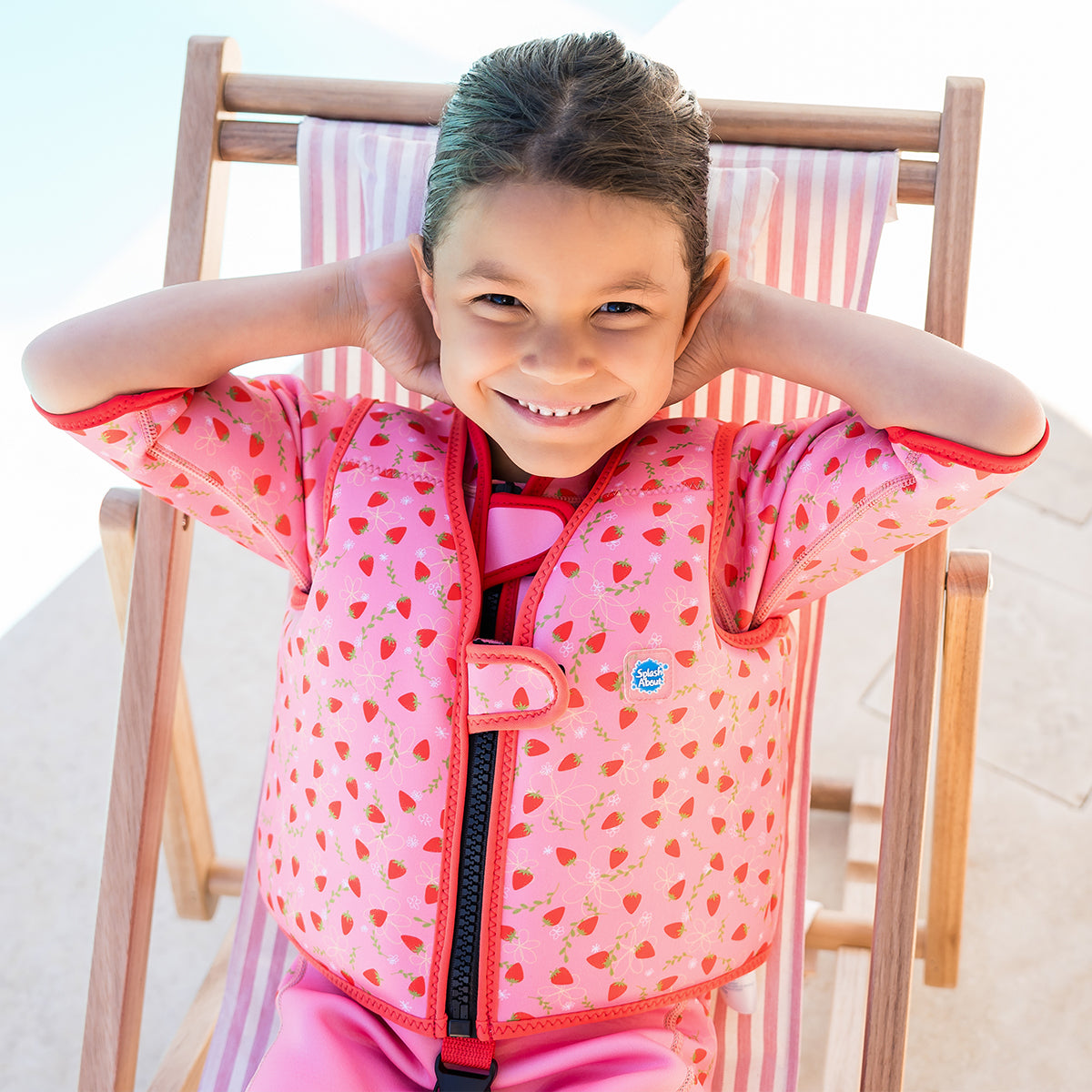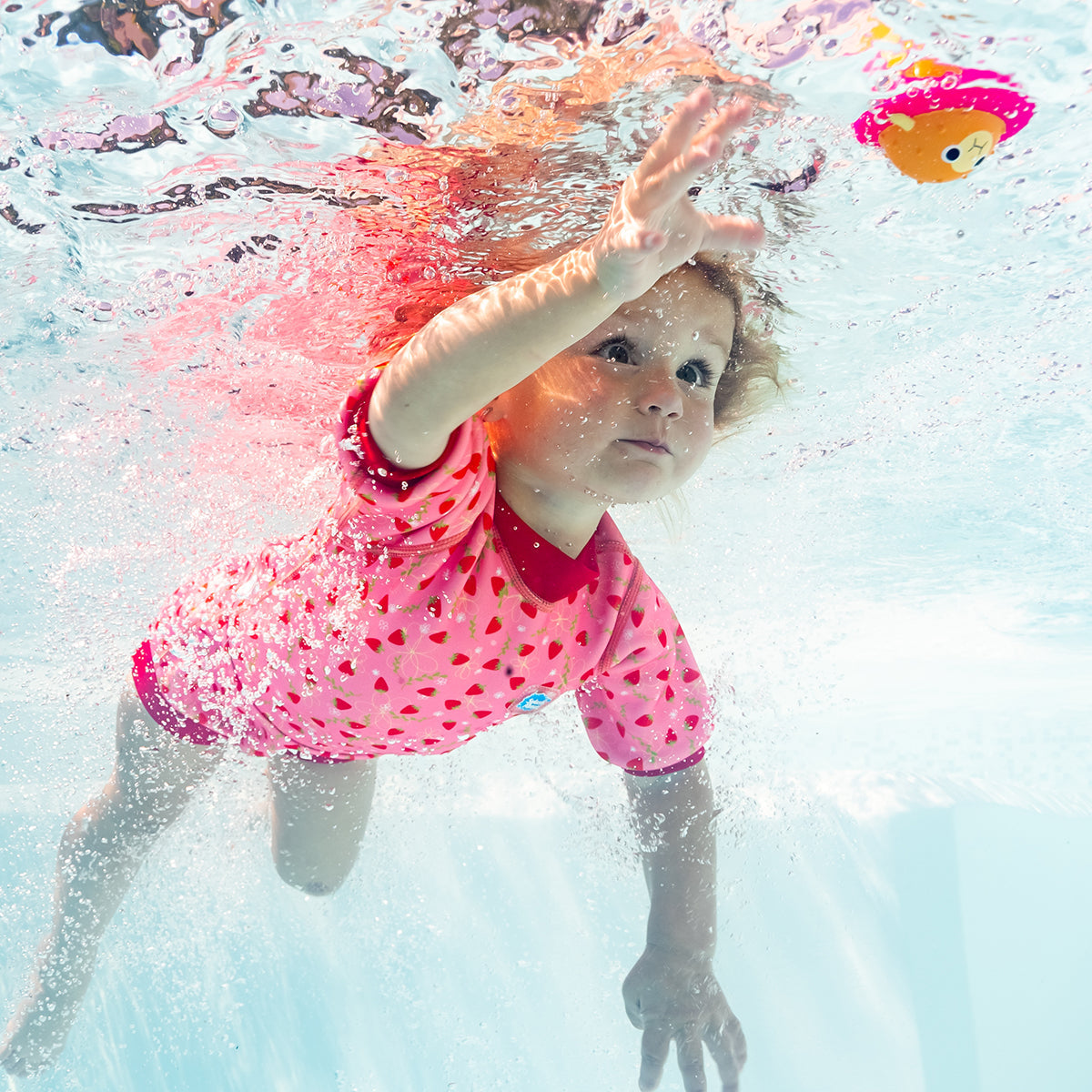Your Complete Guide to Float Vests and Jackets

Page Updated: 04/12/2023
Your Complete Guide to Float Vests and Jackets
Learning to swim is an exciting time for your child but it can also be quite daunting for them (and you!), especially if they’re nervous about being in the water. Buoyancy aids are designed to support children in a natural swimming position and to improve their confidence in the water.
In this guide we take a closer look at float vests and jackets to help you decide if they are the right buoyancy aid for your child.






What are float vests?
Float vests and jackets are worn over swimming costumes or shorts to help children achieve a natural position in the water when learning to swim. They are a buoyancy aid so work with a child’s natural buoyancy to help increase their safety level when in water. The jackets feature removable floats which can be taken out gradually as a child’s confidence and swimming ability improve. Vests with non-removable floats are also available.
Some float vests also have the added advantage of UPF to help protect children’s delicate skin from the sun and are made of neoprene to keep children warmer in cool water. All of Splash About’s float jackets and vests provide UPF50+ sun protection.
What’s the difference between float vests and float jackets?
Both terms are used interchangeably to describe a waistcoat-style buoyancy aid. In the Splash About range, ‘float vest’ or 'Swim Vest' is used to describe vests that don’t have removable floats and have been specially designed to flat pack in order to fit into a suitcase for taking on holiday. ‘Float jacket’ describes vests that do have removable floats.
Are float jackets the same as life jackets?
No, it’s important to note that float jackets are not life saving devices and are not a suitable substitute for life jackets. Life jackets are designed to help a person in the water remain in an upright position, with their head above water, whether they are moving or not.
Float jackets and swim vests do not do this, they are designed instead to help children achieve a natural swimming position when learning to swim, whilst still enabling them to go under water if they wish. When a child is using a float jacket for the first time, it is best to hold their hands until they learn how to balance in the water.
Children must be supervised at all times when in or near water.
Buoyancy aid comparison guide
| Go Splash Swim Vest | Go Splash Float Jacket | Floatsuit | Armbands | |
| Age Suitability | 1-2 Years, 2-4 Years and 4-6 Years | 1-3 Years and 3-6 Years | 1-2 Years, 2-4 Years and 4-6 Years | Birth - 6 years |
| Warmth | Made with Neoprene for added warmth | Made with Neoprene for added warmth | No warmth protection | No warmth protection |
| Safety | Robust material with non-removable floats position children correctly in the water | Robust material with integrated floats which cannot be removed easily by the child | Integrated floats which cannot be removed easily by child | Susceptible to air leaks and punctures, can easily be removed by child |
| Removable Floats | Non-removable Floats | 8-Piece Adjustable Buoyancy Float System |
16-piece Adjustable Buoyancy Float System |
No, floats are either on or off |
| Buoyancy | Helps keeps child in a natural swimming position | Helps keeps child in a natural swimming position | Helps keeps child in a natural swimming position | Keeps child in an upright position in the water with arms above the chest |
| UPF | UPF50+ | UPF50+ | UPF50+ | No sun protection |
| Ease of Use | Slip over arms and zip up front | Slip over arms and zip up front | Pull up and zip up the back | Need inflating, can be awkward to pull on |
| Comfort | Soft neoprene and binding to prevent chafing | Soft neoprene and binding to prevent chafing | Soft fabric with YKK zip | Plastic can cause chafing or rubbing |
| Cost | £22.99 | £24.99 | £25 | £5 |
| Size | Lightweight and packs flat, ideal for holidays | Lightweight and floats can be removed | Lightweight and floats can be removed for packing | Bulky and restrictive when worn, but small when deflated so easy to pack |
The Go Splash Swim Vest is designed as a holiday learn to swim aid, that is lightweight and can be packed in any suitcase or beach bag. It is a holiday essential!
Product Features:
- Non-removable float system makes it easy to use
- Helps children learn to swim by holding them in the correct swimming position
- Multi-award winning product including Platimum in Best Swimming Product, Gold in Best Swim Aid and Gold in Best Travel Invention in the Loved by Parents Awards 2023
- Designed to increase children's confidence in the water and improve swimming skills
- Mix and match with matching swimwear


The Go Splash Float Jacket is ideal as a starter Float Jacket for young children
Product Features:
- 8-piece removable buoyancy system. Floats can be removed in pairs as the child gains confidence in the water
- Helps children to learn to swim by holding them in the correct swimming position
- Designed to increase children's confidence in the water and improve swimming skills
- Mix and Match with matching swimwear


An all in one Floatsuit designed to provide maximum adjustability for learning to swim.
Product Features:
- 16-piece adjustable buoyancy float system. Floats can be removed in pairs as the childs confidence grows in the water
- Learn to swim aid designed to increase children's water confidence and improve swimming skills
- Holds children in the correct learn to swim position in the pool
- Award Winning product


Easy to inflate and use on the go, armbands can be a simple and easy way to start to learn to swim.
Product Features:
- High quality
- Easy to inflate, designed to increase water confidence
- Bright colours


How float vests helps children learn to swim
Once your child is strong enough to stay upright and hold their head up above the water, they are ready to try a float vest. Unlike armbands, which position a child’s arms above their chest and restrict arm movement, float vests fit snuggly to the torso, allowing children to have a full range of movement.
Float vests help position children in a natural swimming position in the water while providing extra buoyancy as they learn to swim. Initially, you will need to hold onto your child’s hands to help them find their balance in the water. The vest will then assist in keeping them afloat as they learn to kick. As they become more confident, you will be able to let go of their hands, and they will be able to stay afloat using only the swim vest.
Float vests are also ideal for children who can already swim but enjoy snorkeling, as they provide stability and comfort when exploring the water for longer periods.


How to use a float vest
Float vests are simple to use; they pull on like a waistcoat and zip up at the front. These vests come with 8 removable floats, which are secured in pockets within the lining of the vest. The floats can be gradually removed in pairs and are marked, allowing you to know the order in which to take them out as your child’s swimming ability grows.
As your child's swimming ability increases, the usual order for removing floats from a vest with 8 floats is in pairs, following this specific sequence:
- Outer pockets at the front of the vest first
- Outer pockets at the back of the vest
- Inner pockets at the front of the vest
- Inner pockets at the back of the vest
The floats work with your child’s natural buoyancy, so when using a swim vest for the first time, you may need to remove some floats to achieve the optimum level of balance for your child.
Even when all the floats are removed, the vest can still be worn to provide your child with extra warmth and sun protection.
Swim vests with non-removable floats are also available. Their advantage lies in their slimline design, making them easy to pack into suitcases. Despite having fixed floats, they provide an equivalent level of buoyancy compared to the 8-piece float jackets. Additionally, they are often more affordable than vests with adjustable floats.




Safety tips for using float vests
- Ensure the float vest fits correctly, this will prevent the vest from riding up and covering your child’s chin and will provide optimum buoyancy. Use Splash About’s size guide with your child’s chest and waist circumference or weight for the perfect fit for our products.
- Check the vest has a secure safety tab across the top of the zip to help prevent children from undoing the zip and slipping out of the vest.
- Choose a vest made from soft neoprene fabric as this will not only provide extra warmth in cooler water but also prevents chafing as the material is so soft.
- Always supervise children when in or near water. Swim vests and other buoyancy aids are not safety devices and should not be used in place of constant adult supervision.
FAQ's
Do float jackets ride up to cover a child’s chin or mouth?
As long as the jacket is the correct size, it shouldn’t ride up. It’s best to choose a jacket that is a snug fit.
Are float jackets suitable to be worn over a wetsuit or swimming costume?
Yes they are, they can be worn over wetsuits or swimming costumes. They are also suitable to be worn with just swim bottoms.
Are float jackets adjustable to fit different sizes?
The size of a float jacket isn’t adjustable so it’s very important to ensure you choose the correct size for your child.
What age are float vests suitable for?
Float vests are suitable for babies over one year old, toddlers and older children.


Further Information
Our Complete Guide to Float Suits will give you all the information you need if you’re unsure whether a float suit or a float jacket is best for your child.
Follow the link to view the full range of Splash About float vests and jackets.



























